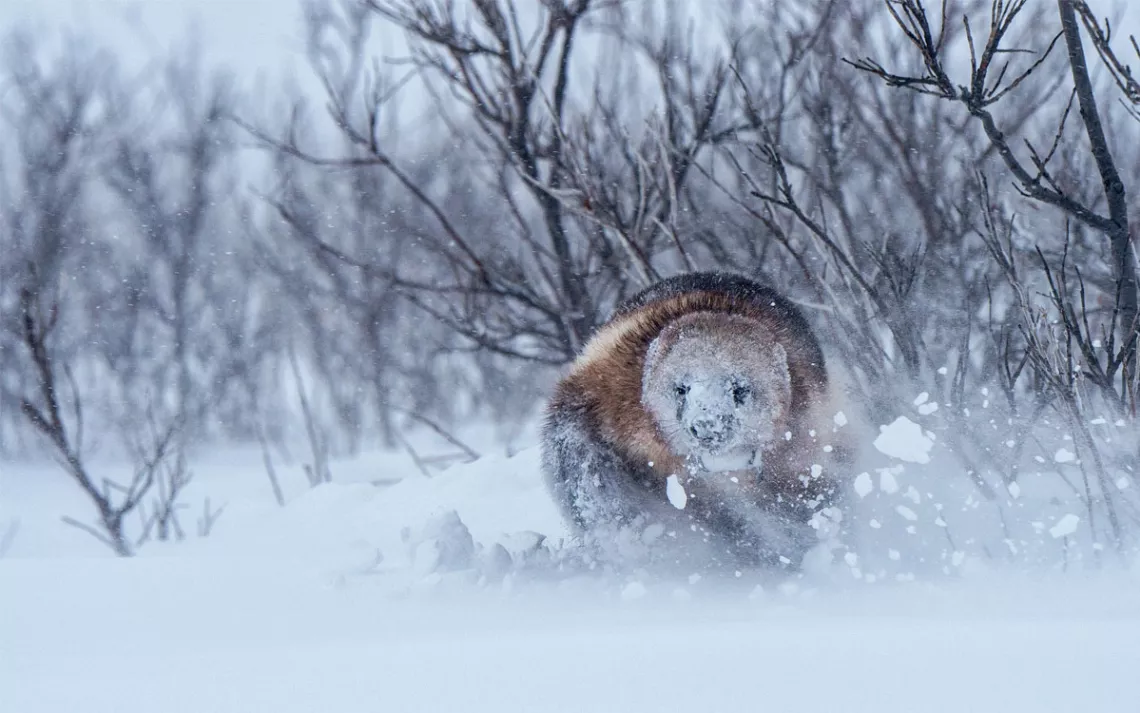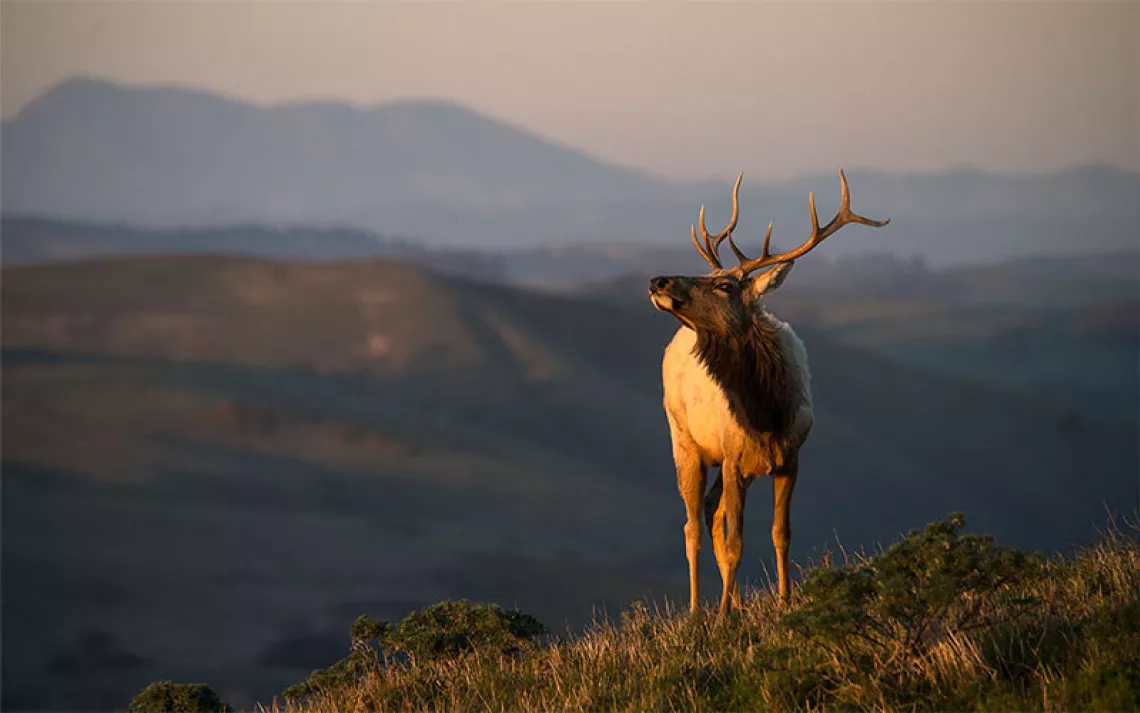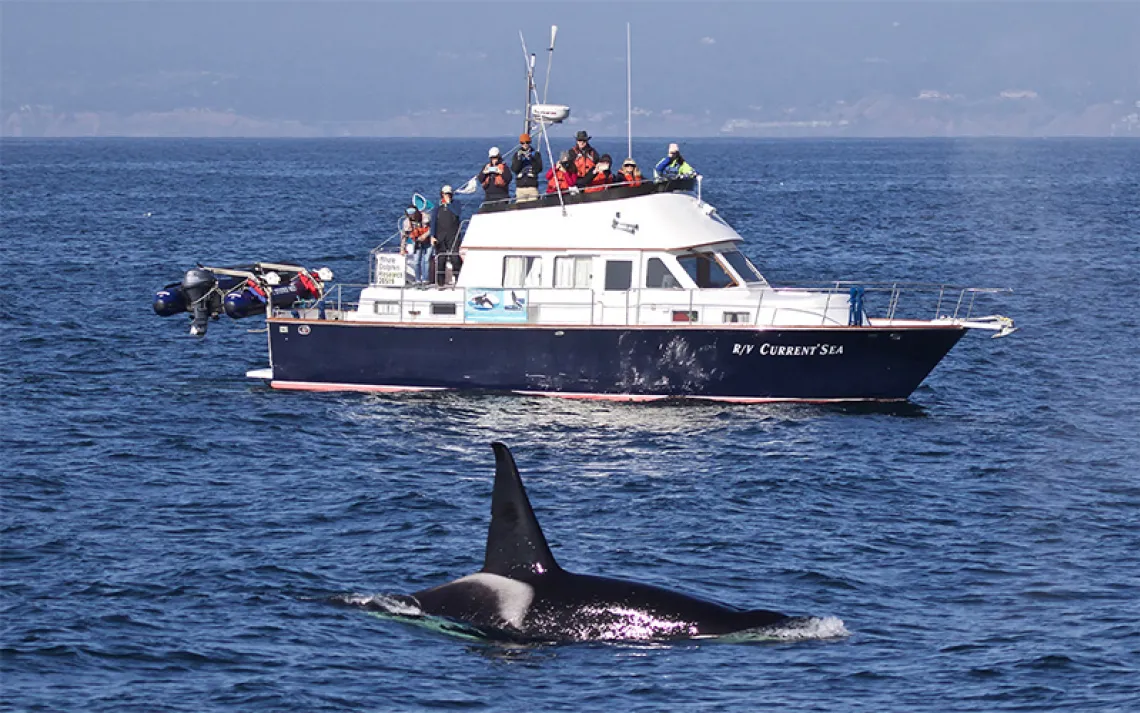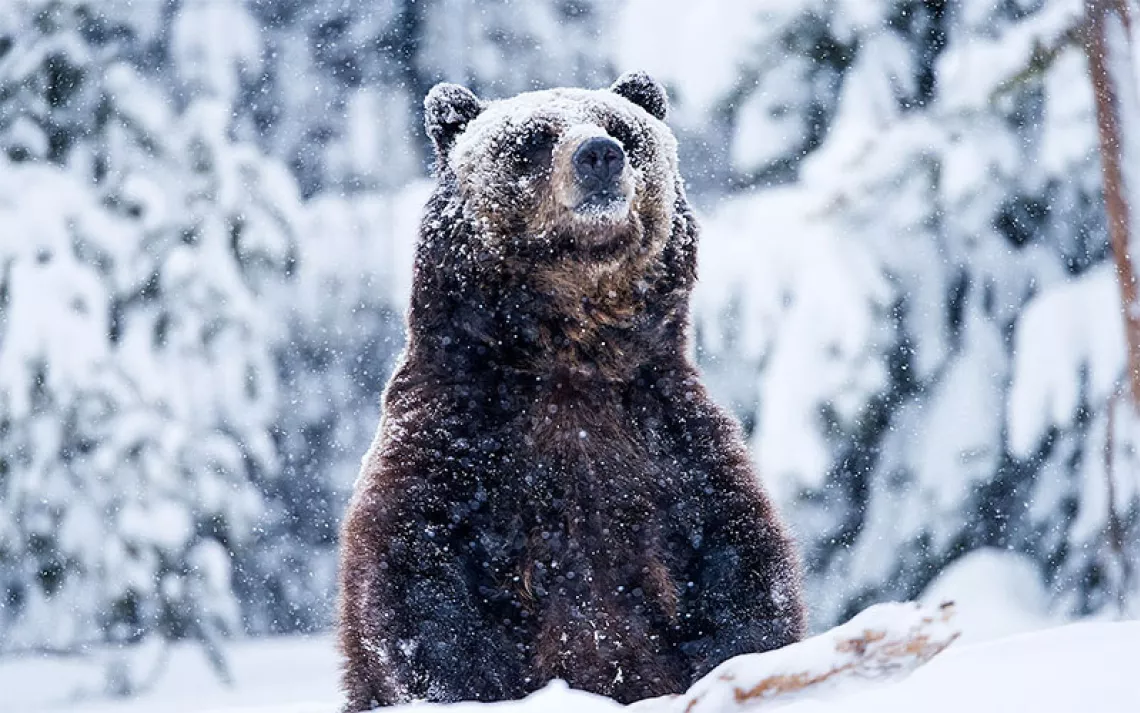Built for Winter
Wolverines thrive in the harshest conditions during the bleakest time of year

Photo by Peter Mather/Minden Pictures
Known as tricksters, gluttons, and even “skunk bears,” wolverines (Gulo gulo) are one of the Northern Hemisphere’s most elusive species. Even trained biologists must go to great lengths to spot one in the wild. Their physical prowess is legendary: They can clock 40 miles a day, take down moose, and, if the stories are correct, face off with grizzlies.
Yet many researchers say that wolverines’ hoodlum-like reputation is overblown. They are often just looking for grub—much of their diet is scavenged carrion and small kills. And they can have a gentler side too—a heartwarming scene in the BBC documentary Mammals shows a male delivering dinner to his mate and their young kit.
Perhaps their most magical characteristic is the way they use snow. When winter descends, the largest terrestrial members of the weasel family float atop powder on paws the size of tea saucers. The deep freeze is no impediment for these hunter-scavengers. They can dig out mountain goats buried by avalanches and caribou that have fallen prey to the cold. Their steely jaws easily snap through frozen flesh and bone.
Unlike most mammals in the Northern Hemisphere, wolverines mate in summer and give birth in winter. Females can delay gestation for the best chance of success, and if all goes well, they give birth to an average of two or three grapefruit-size balls of fuzz weighing several ounces. In the safety of snowy abodes, the tiny kits use a complex series of tunnels measuring three feet or more in depth to insulate themselves from blizzards and hide from predators. Adults also use snow as a deep freezer, stashing kills and carrion for leaner days and warding off thieves.
In North America, wolverines once ranged as far south as New Mexico. By the early 20th century, trapping and industrial development extirpated them in the Lower 48 and parts of eastern Canada. But there’s hope for the species. Wolverines searching for new territory have been dispersing south from western Canada, sometimes crossing vast swaths of fragmented terrain in search of remote, snowy territory. Researchers estimate there are as many as 300 wolverines in the contiguous United States, primarily in the Rockies and the Cascades.
As climate change renders even these refuges inhospitable, wolverines are more vulnerable than ever. Less consistent snow means they have fewer places to cache food and den. And with less powder in winter recreation hot spots, snowmobilers and skiers are pushing deeper into the backcountry, edging out these notoriously disturbance-sensitive creatures.
In November 2023, the Biden administration listed wolverines in the contiguous US as threatened under the Endangered Species Act. It’s a start. But ultimately, wolverines need wild, cold places. Without these, all that might be left are fading tracks in the snow.
Did You Know?
Wolverines are smelly. When threatened, these “skunk bears” emit a scent from their anal glands to ward off danger. They also use their urine and scent glands on their bellies to mark territory and communicate with the opposite sex.
They’re great climbers, using their hooked, semi-retractable claws like crampons to scale ice and snow.
 The Magazine of The Sierra Club
The Magazine of The Sierra Club



